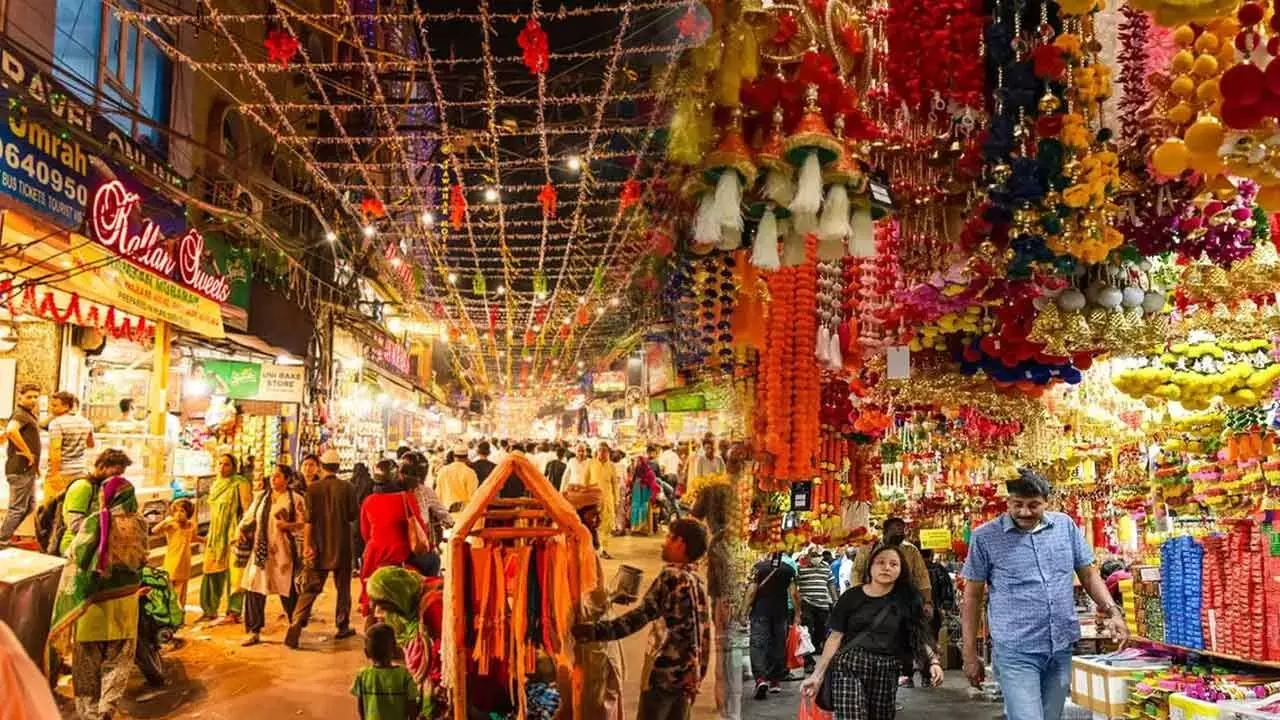Diwali and economics of celebration: When culture drives domestic consumption
Diwali and economics of celebration: When culture drives domestic consumption

Diwali, the festival of lights is a major season of wealth in India. It not only brings lights to every household, but it is also a significant catalyst. From September to October, the weeks leading up to Diwali generated a quarter of the nation’s annual retail sales, making this a crucial driver of growth for companies large and small as well as the national Gross Domestic Product (GDP).
The numbers in 2025 suggest that festive spending is at the verge of touching Rs3.5 lakh crore, 20 per cent more than last year. Household consumption accounting for 60 per cent of GDP is getting it’s most decisive push of the year, making analysts take note. Diwali is the pulse point of the Indian economy, the Confederation of Indian Industry CII said, as people spend more, retailers expand, MSME’s gain traction and funding flows get a confidence boost. Is a celebration with massive economic consequences, it added.
The year 2025 is particularly special with India navigating a volatile global environment. That makes the ongoing surge deeper than mere sentiment – it is an act of demonstration of economic resilience, the power of 1.4 billion consumers moving in unison.
Among the most telling indicators of this Diwali surge is that Gold and Silver Metals that have always symbolized wealth, security and optimism are seeing values soar “Diwali is a force multiplier, the World Gold Council says: “Even with high prices, India’s cultural and investment relationship with Gold remains strong, underscoring it’s role as both a traditional asset and a modern investment instrument.
Auto, White goods surged too. Passenger vehicle sales crossed 400,000 units in September pointing to the record highs through the festive window. Two wheeler sales, a crucial economic indicator in semi-urban and rural India have been rising sharply as harvest incomes and festive sentiments converge. A striking trend in the surge is electric vehicles (EV) sales which are up by 40 percent.” The festive season is proving to be a turning point for EV’s, the Society of Indian Automobile Manufacturers (SIAM) said: “What was a niche is becoming mainstream.”
For the auto sector, Diwali isn’t just a good month, it is strategic pivot in the annual cycle. For consumers it remains a time when economic aspiration and cultural belief align perfectly.
While gold, silver and autos make news, the Diwali economy is also built on transactions that are smaller, but those that get together to create a demand tidal wave. India’s sweets and confectionery sector alone earns more than 30 per cent of its annual turnover during these festive weeks. Apparel sales have risen 25 per cent year-on-year, with both organised retail chains and small boutiques recording brisk business.
A parallel boom is also seen in home renovation and decoration work. Families across cities and towns are repainting walls, refurbishing kitchens, buying new furniture, installing decorative lighting and embracing new design trends. LED and solar-powered lights, once a curiosity, have become common, reflecting rising incomes and greater environmental awareness.
Online festive sales are projected to cross Rs90,000 crore this year, with smartphones, electronics, apparel and home goods dominating consumer preferences. E-commerce is changing Diwali too—it is no longer a neighbourhood festival, but a national marketplace without boundaries.
What sets the Diwali economy apart is Diwali’s impact runs deep, from organised retail and MSMEs to roadside vendors and craft clusters. Artisans, diya potters, sweets-makers, jewellery craftsmen and delivery boys are all being swept up in the charge.

